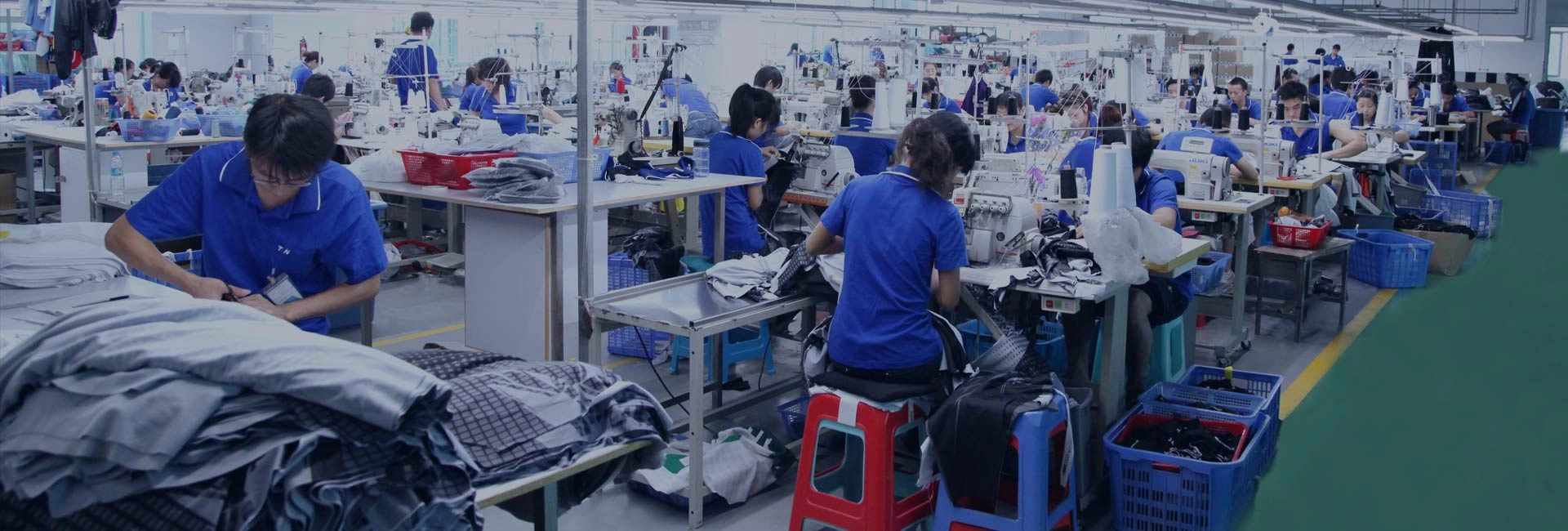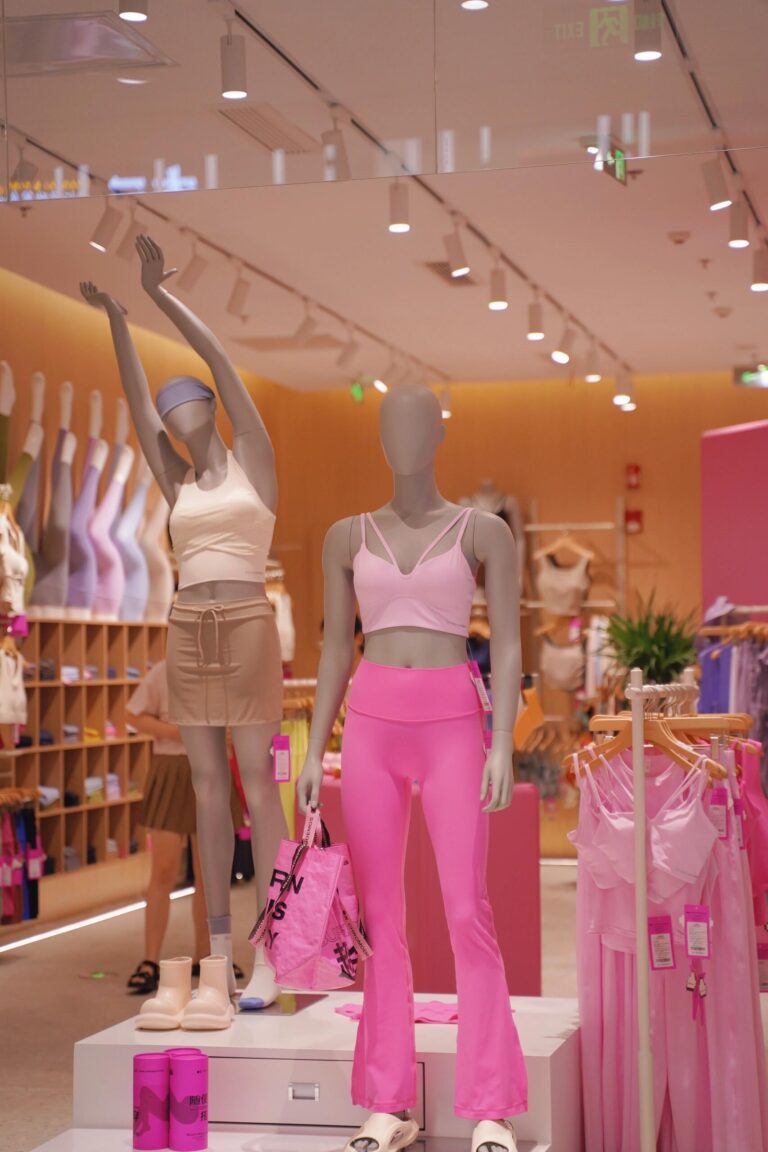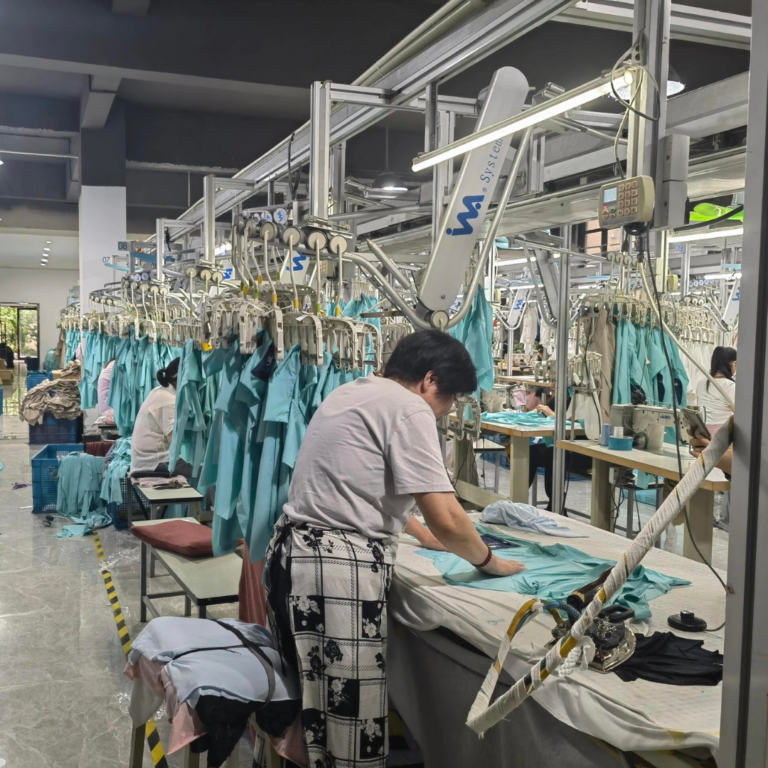With the advent of the financial crisis, numerous once-thriving businesses found themselves in dire straits, with many even going bankrupt in 2023.
The retail department store industry was hit particularly hard. This includes British retail giant Debenhams, with a history of over 230 years, American department store chain J.C.Penney, with a history of 118 years, and Germany’s largest department store group, Galeria Karstadt Kaufhof, all of which declared bankruptcy.
The airline industry also saw several significant bankruptcy and restructuring cases. These include LATAM Airlines, the largest in South America, Avianca, the second oldest airline in the world, and RavnAir Group, the largest airline in Alaska.
Furthermore, clothing brands, due to their large number of physical store assets affected by the pandemic, were also heavily impacted, with many falling into bankruptcy and restructuring. The list includes J.Crew, Ascena Retail Group, the British Arcadia Group, and Victoria’s Secret, among others.
However, at the same time, we observed that sportswear brands were almost unaffected by the pandemic, and few competitors emerged. The industry still maintains a “two superpowers, many strong” situation, where the pandemic hardly impacts dominant companies. This is not only the case internationally, but also in China, where the industry structure remains stable.
According to Euromonitor data, the CR5 of China’s sportswear industry reached 70.70% in 2020, far higher than the overall level of 10.4% in the clothing industry. Due to their higher technological content, consumer demand for sports shoes is more concentrated and sticky, making the market concentration of sports shoes even higher than that of sportswear. The CR5 of sports shoes rose from 64.2% in 2016 to 73.4% in 2020.
As of 2020, Nike (25.6%) and Adidas (17.4%) together accounted for 43% of the market share, mainly occupying the mid-to-high-end market. Coupled with the domestic companies Li Ning and Anta “gaining one side and looking at the other”, the air for other small brands is becoming increasingly thin.
Why is the concentration of sportswear brands so high and their position so stable? We see that this cannot be simply summarized with a light phrase like “brand barriers”. There are more profound industrial roots behind it.
01 Supply Chain Collaboration Barrier
High-quality supply chain resources are relatively scarce in the sportswear industry and are usually controlled by major manufacturers.
Looking at the stock prices of leading sportswear brands, we find that they are generally continuously and long-term rising, and are primarily driven by performance, without serious bubble situations. So, why are there so many long-term bullish trends in the sports brand field?
Aprilluck attributes this to three main reasons: high barriers, high concentration, and high profit margins. Moreover, these three reasons influence and reinforce each other.
A significant part of the high barriers is that high-quality supply chain resources are relatively scarce in the sportswear industry and are usually controlled by major manufacturers.
People usually think that top sports brands are marketing experts, and outsourcing production doesn’t seem that important. However, in reality, high-quality supply chain resources are not as infinitely available to the market as imagined. Whoever can control the existing high-quality capacity has a better chance of occupying a strong market position.
No matter how good the brand concept or design innovation is, it cannot be separated from the production link. High-quality and economical suppliers/manufacturers are the strong backing for the long-term success of sports brands. Faced with the occupation of manufacturing resources by leading companies, other third and fourth-tier or new brands have fallen behind from the production and manufacturing link.
Leading companies will form long-term cooperative relationships with their core supplier systems/manufacturers. On the one hand, large suppliers/manufacturers are too busy to accept and do not need orders from other brands to operate at full capacity and achieve high returns. On the other hand, some cooperative relationships are exclusive, i.e., the production lines and workshops of large suppliers/manufacturers are specifically for custom production for certain major brands.
On the other hand, in supply chain relationships, whether the brand side is dominant and has pricing power will ultimately directly affect the performance of the product. For example, in 2005, Lululemon decided to expand product categories beyond yoga pants. To ensure product supply, it chose to invest in a clothing factory to ensure the stability of its production supply. But by 2011, Lululemon terminated its strategic investment in the clothing factory and streamlined suppliers. For a long time after that, it was caught in a somewhat tense supply chain relationship. To a certain extent, this limited its rapid expansion of innovative categories.
If this is the case for a strong brand like Lululemon, one can imagine the treatment of other small brands in the supply chain.
Looking deeper, as part of the supply chain system, the sportswear manufacturer/contractor industry itself also has high barriers, high concentration, and high-profit rate attributes, including scale, R&D, quality control, production, and delivery, all of which have clear barriers. Some factories also have strong technical strength and the ability to collaborate on new product development, not only being able to respond quickly to orders from leading brands but also providing innovative support at the production level.
For example, when Nike launched the Flyknit Racer, the progenitor of knitted running shoes, in 2012, Shenzhou Group (Nike’s contractor in China) specifically purchased several expensive new devices for Nike, and built new factories and design studios. Small factories find it extremely difficult to make the same investment.
After perfect collaboration, suppliers/manufacturers also share growth with the brand side, becoming stronger in multiple dimensions such as market value, revenue scale, net profit rate, and even surpassing some clients.
For example, Shenzhou Group , the largest clothing contractor in China, had a market value of around HKD 200 billion at one point, surpassing Li Ning, and was not inferior to Li Ning in important
indicators such as operating income and profit margin. In the first half of 2021, Li Ning’s revenue was RMB 10.197 billion, while Shenzhou Group ‘s revenue was RMB 11.369 billion. From 2017 to the first half of 2021, Shenzhou Group ‘s average net profit rate reached over 22%, 9 percentage points higher than Li Ning’s average net profit rate during the same period.
ODM contractors like Shenzhou Group are never just simple sewing factories. They are responsible for gathering various industry chain resources such as fabric factories, printing factories, yarn factories, dyeing and weaving factories, sewing factories, auxiliary material factories, and clothing factories. They produce samples after purchasing the highest quality raw materials, and then mass-produce to reduce costs.
It is not easy to gather these industry resources together and maximize their benefits. In the field of sportswear, the technical content of contractors is generally underestimated.
In addition to being firmly tied to powerful outsourcing suppliers, some leading sports brands also expand upstream in the supply chain. For example, in 2018, Li Ning built its own sports goods manufacturing base in Guangxi for the first time, responsible for the research and development and manufacturing of raw materials, sportswear, etc., with a production capacity accounting for about 30% of Li Ning’s total volume.
Aprilluck conducted a market survey on product raw materials: high-quality sports clothes from major brands purchased on the market can hardly find manufacturers of the same quality materials, because many major brands are actually controlling the uniqueness of their products by controlling raw materials.
Therefore, for new sports brands, they need to face the strong moat of the supply chain system in the sportswear industry from the moment they are born, and then compete in other aspects such as channels and marketing.
02 Niche Markets Are Not Safe Havens Either
It’s hard for smaller brands to win in established mature markets. Their breakthrough usually lies in niche markets, but the situation is somewhat unique in the sportswear industry.
Peter F. Drucker, the father of modern management, wrote in his book “The Effective Executive” that he observed outstanding entrepreneurs and found that they all shared a common characteristic: they were full of curiosity about the world. Through observation and understanding, they could always discover the uniqueness of every person, every place, and every thing.
In fact, what Drucker is talking about is a kind of entrepreneurial business intuition, especially the business intuition to discover unique differentiated markets.
Faced with strong leading competitors, the most feasible path for new brands to survive is to find differentiated niche markets. Essentially, this means finding a niche field and building a unique, differentiated kingdom within it. Typical representatives include Under Armour, which focuses on professional sports, Lululemon, the number one yoga brand, and Biyin Lefen, China’s “first stock in golf clothing.”
Biyin Lefen, which has always positioned itself as “luxury sportswear,” has performed well in stock prices. In fact, its offline store revenue accounts for more than 90% of total income, but it can still create revenue against the impact of the pandemic. In the first half of 2021, Biyin Lefen achieved a revenue of RMB 1.022 billion, an increase of 33.1% compared to RMB 766 million in the same period last year.
Since its establishment in 2003, Biyin Lefen’s revenue and net profit have been steadily increasing, which is closely related to the strong stickiness of its brand customers and high repurchase rate. The company gets 70% of its income from high-stickiness, low-price sensitivity mid-to-high-end customers. Over the past decade, its gross profit margin has remained above 60% and continues to rise. In 2020, the gross profit margin and net profit margin were 69.12% and 24.74% respectively, and the return on net assets after deducting non-recurring gains and losses was 21.10%.
Due to the uniqueness of the sports field, many niche sportswear have very high requirements for fabrics, and ordinary sports brands find it difficult to obtain internationally leading high-quality (functional) fabric resources. Biyin Lefen has long maintained a stable cooperative relationship with international high-quality fabric suppliers such as Itochu and Gore — the abundant and stable supply of high-quality functional fabrics is a strong guarantee for Biyin Lefen’s daring to position itself as a golf brand.
Another example is Under Armour, a sports technology professional brand that focuses on “differentiation.”
In 1996, Under Armour founder Kevin Plank developed a new material that keeps athletes fresh and light during intense exercise. After 19 years of development, Under Armour went public on the New York Stock Exchange with its quick-drying clothing products.
To this day, people’s perception of Under Armour is a “disruptive” representative of the “technology + professional” innovative sports brand. Founder Kevin Plank also stated that differentiated products are the core of Under Armour’s customer recognition.
It can be seen that in the competition in the sports industry, differentiation based on types of sports is the most reliable for new brands and small brands.
Whether it’s competitive sports or mass sports, there are a myriad of types of sports. People’s demand for niche sportswear is based on their love for niche sports categories.
Faced with the high barriers of domestic and foreign sportswear brands, the “small but
beautiful” vertical field is suitable for blazing a unique trail. Brands like Under Armour and Lululemon are not trying to compete with Adidas and Nike for the existing market, but are expanding into underserved niche markets. Therefore, new products will quickly gain consumer recognition after they are launched.
However, niche sports markets have limited capacity and can often only accommodate one brand to run out. Therefore, we can only see Under Armour and Lululemon occupying the quick-drying clothing and yoga pants market, and there is basically no second strong brand.
But strong major brands can enter niche sports fields relatively smoothly by leveraging their brand advantages and channel advantages. For example, yoga pants products from Nike, Adidas, and Anta are also recognized by consumers, and Nike also has a professional golf business line.
This is not good news for startups and small brands focusing on vertical categories: their competitors include strong brands in niche tracks like Lululemon, as well as the business lines of major brands in this sport. The market often discards most small brands and leaves only one niche brand.
Even the vertical brands that survive successfully have to face the fate of being acquired by major brands at any time. For example, the brands acquired by Anta include Wilson, a strong brand in the tennis field, and DESCENTE, a high-end ski brand.
Overall, most niche sports tracks have limited scale and lack the soil for the formation of major brands. Even if there are companies that can survive smoothly, they are often eaten up by major brands using their own advantages, or even directly acquired.

03 Conclusion: The Strong Get Stronger
Detailed division of labor and scale advantages have completely changed the process of industrial production. The barriers to entry in what seems like simple “sewing work” in footwear and clothing have become insurmountable after being divided into countless processes.
Unlike the competition stories presented in industries such as snacks, daily chemicals, catering, and fast-moving beverages, where brands are quickly replaced, new brands overtake in curves, and the latter waves take the lead, in the field of sports brands, top brands have been precipitated for more than a decade, several decades, or even a hundred years.
Even niche leading brands such as Lululemon, Under Armour, and Fila, which have received much attention in recent years, are the same — there are very few “brand new brands” in the true sense.
Although analysts and consultants are emphasizing the importance of differentiation and branding, not all companies can do it. As mentioned earlier, this involves issues in all aspects, including supply chain, sports track, high marketing investment, etc., and only strong companies can win all.
The sportswear industry itself has developed into a fairly mature market, especially the market cake of the “large and complete” category has been divided up. The entry barriers in each link of the entire industrial chain are already high, and the technical barriers of sports shoes are even higher — its cutting design and production processing chain are more complicated and detailed, and it is still the world of a few brand merchants, and even the market structure of the foundry is very stable.
And in the face of new market opportunities, not only will the new forces stare at the cake in each niche track, but the sports giants are also constantly expanding their boundaries and possibilities. For example, Anta has increased its efforts in technology research and development, launched short track speed skating suits, racing suits, knitted ski suits and other technology sportswear products, and Li Ning incubated a new high-end sports fashion independent brand “LI-NING 1990” at the end of last year, mainly targeting Anta FILA.
These sports giants know well: their advantages in the supply chain and channels can make products better than other brands and sell them further. Laying down the niche categories that customers need can help companies achieve continuous growth in performance and can also eliminate potential competitors.
Adam Smith, in his masterpiece “An Inquiry into the Nature and Causes of the Wealth of Nations,” described his visit to a pin factory. The specialized division of labor among the workers that Adam Smith saw, and the resulting economies of scale, left a deep impression on him: the first person drew iron wire, the second straightened it, the third cut it off, the fourth sharpened it, and the fifth polished the top for the installation of the round head.
Detailed division of labor and scale advantages have completely changed the process of industrial production. The barriers to entry in what seems like simple “sewing work” in footwear and clothing have become insurmountable after being divided into countless processes. The mature market of sportswear has brought the “economy of scale” to the extreme and evolved into the strong competitiveness of leading companies.
What can be foreseen is that the future sports market will still be vast and competitive, but how much space can be left for new brands is unknown.



